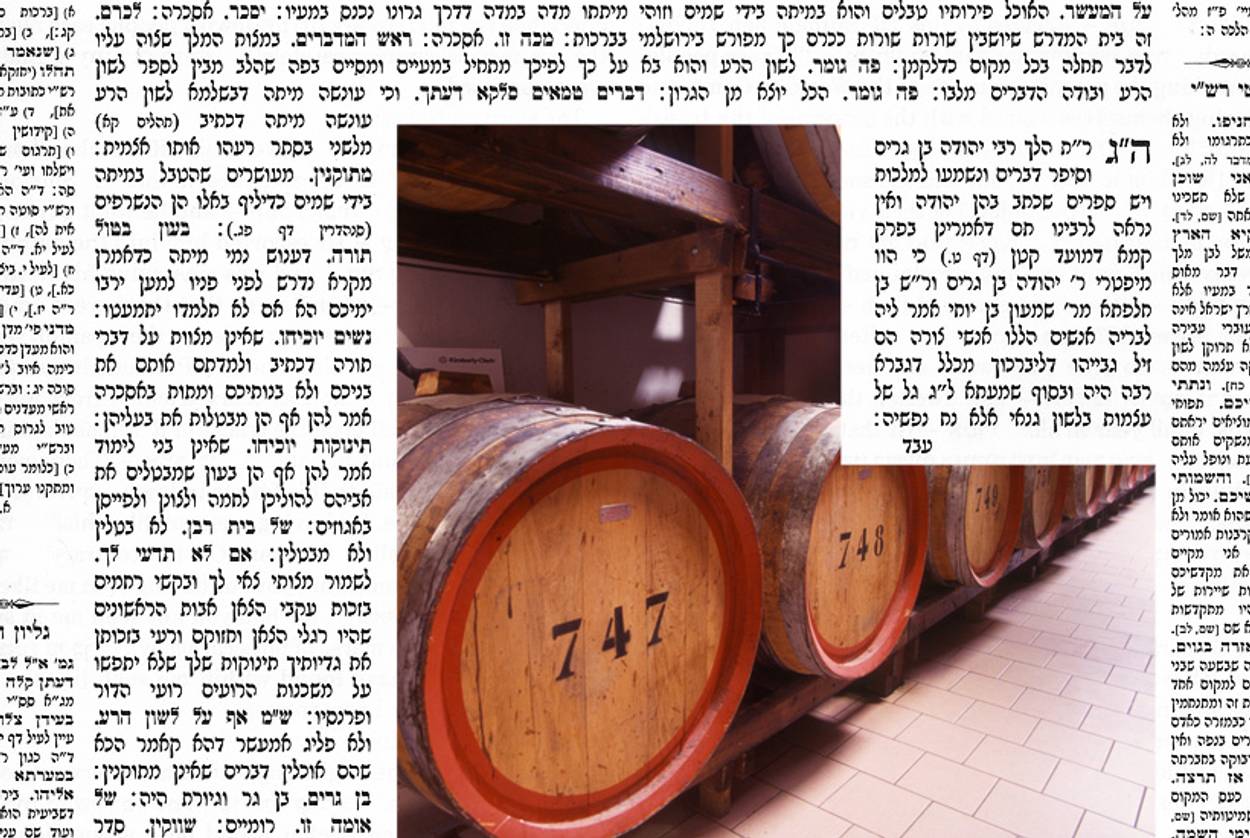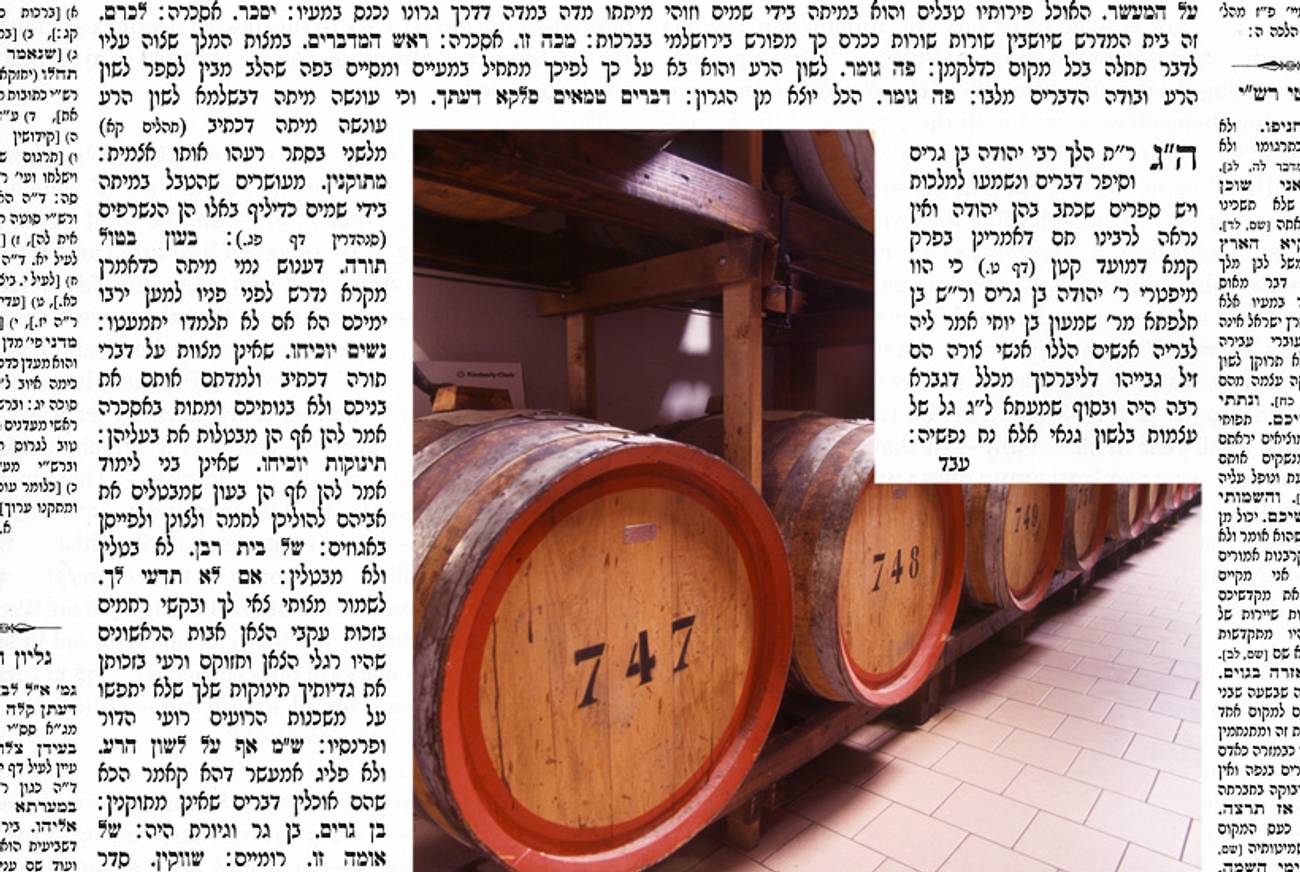How the Talmud Has Bridged the Gaps Between Various Jewish Cultures for Ages
By imbuing even the most mundane things—like vinegar—with importance, the rabbis find proof of sacred history




Literary critic Adam Kirsch is reading a page of Talmud a day, along with Jews around the world.
The Talmud is a vast work of historical memory, but its constant subtext is the danger of forgetting. The Talmud, of course, is made up of two very different parts—the Mishnah, a legal code edited around 200 C.E., and the Gemara, a series of debates about the Mishnah edited around 500 C.E. The Mishnah was a law code pertaining to Jewish life in the land of Israel, written in Hebrew; the Gemara, written in Aramaic, records the opinions of rabbis living in Babylonia, in the Persian Empire.
There is, then, a great gulf of time and space, a historical rupture, inscribed within the Talmud itself. The Amoraim are often reduced to guesswork when they try to figure out the Mishnah’s exact meaning and, still more often, its exact authorship. They are constantly asking which Tanna held which opinion, and why, and how you can tell. Frequently, they have to deduce what a given Tanna thought by analogy: If he said X regarding one subject, he must have said Y regarding another. At least as much energy is devoted to these questions as to the substance of the laws themselves.
Sometimes, as we saw in the Daf Yomi reading this week, the loss of knowledge is still more profound, when the very meanings of words used in the Mishnah are forgotten. In Pesachim 39a, for instance, the Mishnah lists the species of vegetables that can be used to make maror, the bitter herbs eaten on Passover: chazeret, tamcha, charchavina, ulshin. But these names conveyed nothing to the Aramaic-speaking rabbis of the Gemara, who had to translate them into their own language: chasa, hindvei, tamachta.
And the chain of translation doesn’t end there. Over the next 500 years, the meaning of these plant names was lost again, and so Rashi, commenting on the Talmud in the 11th century, had to try to figure out their French equivalents: hindvei, in old French, was krespelah. And in the last thousand years, krespelah itself was forgotten, so now we English-speakers have to guess at what Rashi was talking about. According to the Schottenstein Talmud, it is probably what we call endive, or possibly escarole.
Depending on how you look at it, then, this is either a remarkably strong tradition or a fragile one. Almost 3,000 years after Moses is supposed to have written the Torah, 1,500 years after the Talmud, 900 years after Rashi, Jews are still eating maror on Passover. Yet it’s entirely possible that what we eat as maror—for most American Jews, that means horseradish—is completely different than what each of those earlier Jewish cultures ate. In food, as in more abstract matters, Judaism is not an unchanging heirloom, but a continuous process of translation and interpretation.
As a practical matter, the rabbis of the Gemara conclude, any vegetable can be maror as long as it is pale green in color, has sap, and tastes bitter. Further qualifications are made: The vegetable must be moist, not dry, and it cannot be preserved, stewed, or cooked, since all these things cause it to lose its bitterness. “The general rule regarding this matter: Whatever has retained the taste of maror, we may fulfill our obligation with it; and whatever has not retained the taste of maror, we do not fulfill our obligation with it,” according to Rabbi Meir.
The Talmud goes on to consider various specialized uses of chametz, aiming as always to cover all possible bases. We already know that chametz can’t be cooked or eaten. Now we learn that any process that exposes grain to water is held to begin the process of leavening and so is forbidden on Passover. “A woman may not soak bran to take with her to the baths,” for instance—apparently scrubbing with bran was a common way of washing. These kinds of details help to illuminate the texture of Jewish life in Talmudic times, as when the rabbis discuss the ways that Jewish women would deal with unwanted body hair: “The daughters of the poor would plaster with lime; the daughters of the wealthy would plaster with fine flour”—this is forbidden on Passover, naturally—“the daughters of royalty would smear themselves with oil of mohr,” like Esther when she was groomed for Ahasuerus.
Finally, the Mishnah states a general rule: “Anything that is made from a species of grain” that has leavened is forbidden on Passover. The Gemara then raises the obvious question: If this is the rule, why has the Mishnah bothered to carefully enumerate all the possible food products and cosmetics that are banned? On Pesachim 42a, for instance, we get a list of exotic foods that contain chametz: Babylonian kutach (a kind of dip made of sour milk and moldy bread, which sounds thoroughly inedible), Median beer, Idumean vinegar, Egyptian zisom (a drink made of barley and saffron). Why not just state the principle and leave it at that?
The answer the rabbis give shows that they were very aware of the differences between various Jewish cultures and periods and that they saw the Talmud itself as a way to bridge those gaps. They listed so many examples, we learn, “so that one should be familiar with them and with their names.” In other words, it was important for the law itself to take note of the details of Jewish life, so that these details could become known to Jews in other times and places.
This had practical implications, as the Gemara shows in an anecdote concerning a Jew from the land of Israel who traveled to Babylonia. He was about to be served meat, and he asked his host for a condiment to go with it. “He overheard them saying, ‘Serve him kutach’ ”; but since this Jew knew his Mishnah, he knew that kutach was a dairy product and could not be eaten with meat. “Once he heard the word kutach, he abstained from eating it.”
All this talk of food offers the rabbis a good opportunity to record some of the medical wisdom of their day regarding healthy diet. Kutach, despite its popularity, was considered bad for you: It “clogs the heart, blinds the eyes, and weakens the body.” Other parts of the rabbis’ diet advice are the exact opposite of today’s conventional wisdom. We are constantly told to eat whole grains and vegetables, for instance, but to the rabbis, “coarse bread”—by which they meant bread containing bran—and “raw vegetables” have the effect of hurting the posture and the eyesight, not to mention “increasing the solid waste.” Rabbinic health food, on the other hand, included “refined bread”—what we would call white bread—and “fatty meat”—which we now regard as only slightly less deadly than smoking. It seems that people have always been very judgmental about diet, though the exact things they praise and condemn are always changing.
Finally, the discussion of food leads back once again to the subject of Jewish longing for the vanished Temple. In addition to all its other glories, the rabbis now tell us that, while the Temple stood, wine in Judea never went bad. To make it turn into vinegar, Jews had to add barley to restart the process of fermentation; otherwise, the wine would stay sweet forever. But once the Temple fell, this particular blessing departed from the Jews and was transferred to the Idumeans, the people known in the Bible as the Edomites. Now it is the Idumeans who have to add barley to their wine, which is why vinegar produced in this way is called “Idumean vinegar.” To the rabbis, this is proof of the ongoing enmity between Jews and Edomites, which began when Jacob took the birthright from Esau: “If this one is full, the other is desolate, and if the other is full, this one is desolate.” In this way, even something as mundane as vinegar can serve the rabbis as a proof of sacred history and a sign that all human affairs are governed by God.
***
Like this article? Sign up for our Daily Digest to get Tablet Magazine’s new content in your inbox each morning.
Adam Kirsch is a poet and literary critic, whose books include The People and the Books: 18 Classics of Jewish Literature.
Adam Kirsch is a poet and literary critic, whose books include The People and the Books: 18 Classics of Jewish Literature.